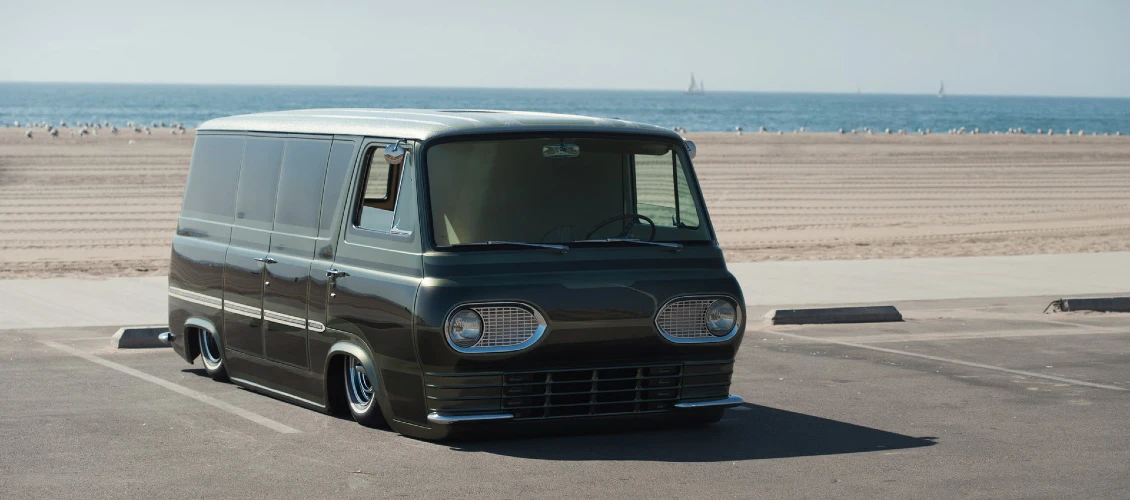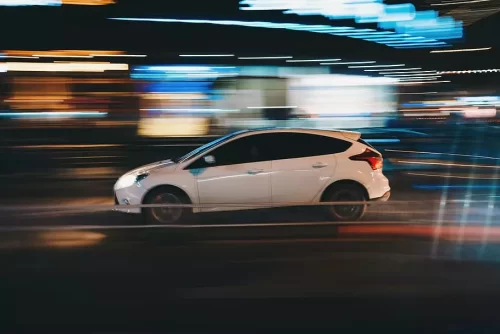
What Is The Firing Order For The Different Ford Engines?
Hey there, car aficionados! If you’ve ever dabbled in the world of car repairs or you’re simply a Ford lover, you might’ve heard the term

The Ford Econoline, also known as the E-Series, holds a special place in the automotive landscape as one of the most recognizable and versatile vans ever produced. Since its inception in the early 1960s, the Econoline has evolved from a compact van to a large, capable vehicle used for various purposes. Let’s take a closer look at the famous Ford Econoline van, exploring its history, evolution, and the roles it has played over the decades.
Related Article: The Evolution of Ford Bronco

The Ford Econoline made its debut in 1961, marking Ford’s entry into the compact van and pickup market. Initially, the Ford Econoline was designed to compete with the Volkswagen Bus and other similar vehicles. It featured a forward-control (cab-over-engine) layout, which maximized interior space despite its compact footprint.
In 1969, the Ford Econoline underwent a significant transformation, transitioning to a larger body style. This change was in response to the growing demand for bigger and more powerful vans. The new Ford Econoline provided more interior space, enabling it to serve a variety of purposes, from passenger transport to cargo hauling.
One of the key factors behind Econoline’s enduring popularity has been its reputation as a reliable workhorse. Businesses across various industries have relied on these vans for deliveries, transportation of goods, and mobile workspaces. The Econoline’s cargo space, towing capacity, and durability have made it a favorite for commercial use.

During the 1970s and 1980s, custom vans became a cultural phenomenon, and the Econoline was at the forefront of this trend. Owners would often modify their vans with custom paint jobs, plush interiors, and even high-tech audio systems. The Econoline’s spacious interior and easily customizable body made it a perfect canvas for these creative endeavors.
Ford also offered the Econoline in passenger configurations, known as the Club Wagon, which became popular for large families and group transportation. These models featured comfortable seating for up to 15 passengers, making them ideal for schools, churches, and shuttle services.

The versatility of the Ford Econoline has led to its use in various specialized roles, including as ambulances, police vans, and TV production vehicles. Additionally, Econoline has made numerous appearances in films and TV shows, often adding a touch of character to the scenes it’s featured in.
In the late 2000s, the Ford Econoline underwent another transformation, evolving into the E-Series. While still maintaining its traditional strengths, the new Ford E-Series focused more on technology and comfort, with an improved standard engine, better safety features, and more modern interiors. This iteration continued to serve the needs of businesses and large families alike.

As Ford shifted its focus towards the Transit series for commercial vans, the production of the E-Series was limited to cutaway and stripped chassis models after 2014. However, the legacy of the Econoline as a versatile and reliable van lives on. The used market for a Ford Econoline remains strong, with enthusiasts and commercial users alike seeking these vehicles for their durability and adaptability.
The Ford Econoline vans produced in the mid-2000s, specifically from 1997 to 2014, were available with the Ford Triton 5.4L 2v engine. This engine was commonly found in various Ford models, including certain configurations of the Econoline E-Series vans during that time period.
The Ford Econoline series, spanning over five decades, has been more than just a line of vans. It’s been a symbol of American automotive ingenuity, a canvas for creativity, and a dependable partner for businesses and families. As we look back at these famous Ford vans, it’s clear that their legacy is not just about the miles they’ve traveled but also about the myriad ways they’ve been an integral part of people’s lives and work.
Hey there, car aficionados! If you’ve ever dabbled in the world of car repairs or you’re simply a Ford lover, you might’ve heard the term

In the mid-90s, the automotive landscape was undergoing a significant transformation, with manufacturers pushing the envelope in terms of design, performance, and technological innovation. Amidst

Junk Yard Car to Magical Dune Buggy Three teens find a “SCHLEP” car and a magical horn, and they start fighting crime! For two seasons

Issue 26 • Engine & Transmission Tips Stop squinting when you’re driving at night… Do you wish you had those cool blueish, super-bright headlights, instead

Ford’s EcoBoost engines have gained immense popularity for their performance and fuel efficiency blend. For enthusiasts seeking to unlock the full potential of their Ford

In this issue, we learn about the long history about Herbie, The Love Bug. Herbie, The Love Bug, that famous VW Beetle, spans a cinematic lifetime